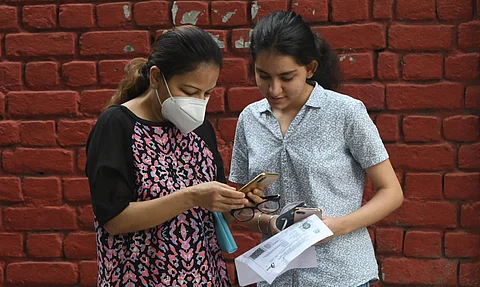

Cassandras painting the spectre of misery of the Malthusian kind must be disappointed. India has reached a historic milestone. The latest National Family Health Survey informed Indians that the total fertility rate (TFR), the average number of children who would be born to a woman, has dropped to 2.0. The 40 per cent drop in TFR in three decades is a testimony to the success of the policy of persuasion over the promotion of coercive diktats, and deserves to be celebrated.
The good news is that even though the TFR has slid lower than the deemed ‘replacement level’, the pace at which enough children are born to maintain a stable population, India is expected to continue to have the largest working-age population. India will add over 9.7 million every year to the workforce till 2031 and 4.2 million per year till 2041. In effect this is verily the decade to harvest the demographic dividend.
That said, the harsh reality is that the promise of prosperity comes with the caveat of ‘conditions apply’. The text book definition of demographic dividend states that a shift in the age structure of the population, especially a rise in the share of the working-age population, can result in higher incomes, consumption, investment and therefore GDP growth. The hypothesis is conditional -- harnessing the dividend demands that the bulk of the working-age populace finds remunerative employment.
Employment matters and fundamental to the algebraic equation is the participation rate of the working-age population – that is, the percentage of those in the age bracket participating in the labour force. Currently India’s working-age population – classified as those between the ages of 15 and 64 -- is in excess of 925 million. The Economic Survey reveals that the number of persons active in the labour force at around 518 million. The gap, the missing hands, essentially reflects the edging out of women from the workforce.
It is said women hold up half the sky. Yet barely 19 per cent of Indian women of working age participated in the labour force in 2021 as per the World Bank. The question which must haunt India and its policymakers is can a nation harness its potential when women stay out of the labour force. To appreciate the starkness of this gloomy picture one must consider data on labour force participation rates of other countries.
India is in the company of Pakistan and Somalia. In female workforce participation rate India ranks worse than Saudi Arabia at 31 per cent, Turkey at 32 per cent, Bangladesh at 35 per cent, Myanmar at 41 per cent, Uzbekistan at 45 per cent, Malaysia at 51 per cent, Mongolia at 51 per cent, Thailand, at 59 per cent. Even countries in Sub-Saharan Africa fare better.
The history of economic development is explicit about necessary and sufficient conditions for prosperity. No large economy has attained its level without the participation of women in the workforce. Female Labour Force Participation Rate in the G7 countries ranges between 42 and 61 per cent. India trails all its peers among the BRICS nations on female workforce participation rate -- China is at 62 per cent, Russia is at 54 per cent, Brazil at 49 per cent, South Africa at 46 per cent.
This brings into question the design and playbook which rests on the slogan Beti Bachao Beti Padhao. What must the girl child aspire for? In 2021 India slipped 28 places in the Global Gender Gap index ranked at 140 among 156 nations – a prime reason being the slide in workforce participation rates. The government argued in the Lok Sabha that a number of steps are being taken including changes in labour laws, provision of longer maternity leave, creche facilities and equal remuneration. Yet the participation rate has slipped consistently across years from a peak of 32 per cent. Indeed the state wise data spliced for rural and urban female participation rates is worse. The need for a paradigm change is manifest.
There is much lather about political empowerment of women – one facet being reservation of seats in Parliament. Whether that alone will change the stranglehold of circumstance is an open question. India has had a woman as prime minister and the current Lok Sabha has over 75 women MPs. There have been 16 women chief ministers – yet the track record of these states is not inspirational to say the least. There is no disputing that social (and economic) conditions are a contributory factor. Clearly the run of the mill policies are not enough and there is a need to install affirmative intervention. There is merit in the argument that economic empowerment enables and propels political empowerment.
A good start could be reserving a third of government jobs (within the current reservation norms) for women – to create room, arrange guard rails to enable families feel secure for women to step out and be able to contribute. The lead would have to be taken by national parties. In the run-up to the 2019 polls both the BJP and the Congress considered reservation of government jobs for women. The Congress announced it in its manifesto but failed to live up to its word even in the states it rules. The BJP which is in power in the centre and in a dozen states could set an example. The hollowing of female participation in the economy has implications for the economy and society.
Shankkar Aiyar
Author of The Gated Republic, Aadhaar: A Biometric History of India’s 12 Digit Revolution, and Accidental India
shankkar.aiyar@gmail.com